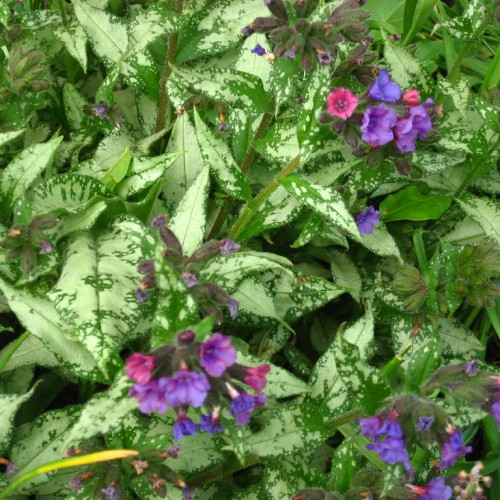
Bethlehem sage
Pulmonaria saccharata
Cycle:
Herbaceous Perennial
Watering:
Average
Hardiness Zone:
3 - 8
Flowers:
Flowers
Sun:
Part shade,full shade
Fruits:
Fruits In Summer Ready In
Edible:
Yes
Leaf:
Yes
Growth Rate:
Moderate
Maintenance:
Low
Care Level:
Medium
watering
When watering the Bethlehem Sage, make sure to check the soil by sticking your finger in between 1-2 inches deep before watering. During the growing season, water when the soil begins to dry out. Make sure the soil is slightly moist but not saturated. Water thoroughly each time, until water drains from the bottom of the pot, to ensure that the entire root system is adequately moistened. In the winter, water less often, allowing the plant to dry out in between watering in order to avoid root or stem rot.
sunlight
Bethlehem sage requires some direct sunlight to fully thrive and develop the most vibrant and showy foliage possible. This plant should be in a location where it can receive at least 3-4 hours of direct sun each day, ideally during the morning hours when the sun is at its softest. If this is not possible, then dappled or partial shade is acceptable. Any more than 4-5 hours of direct sun can result in foliage scorching, so be sure to provide enough shade from nearby trees or structures to keep this plant protected from the direct afternoon sun.
pruning
Bethlehem sage (Pulmonaria saccharata) should be pruned in early spring, when the first new growth appears. Prune the plant by cutting away excess, overgrown stems at their base. This encourages new growth and keeps the plant compact and full. Pruning back the stems to around 6 inches in height also helps create bushier growth and improve its appearance. Make sure you remove any dead or damaged stems in the process. It is not necessary to prune the Bethlehem sage every year, but it is beneficial to give it a trim when it appears to be overgrown or unkempt.
